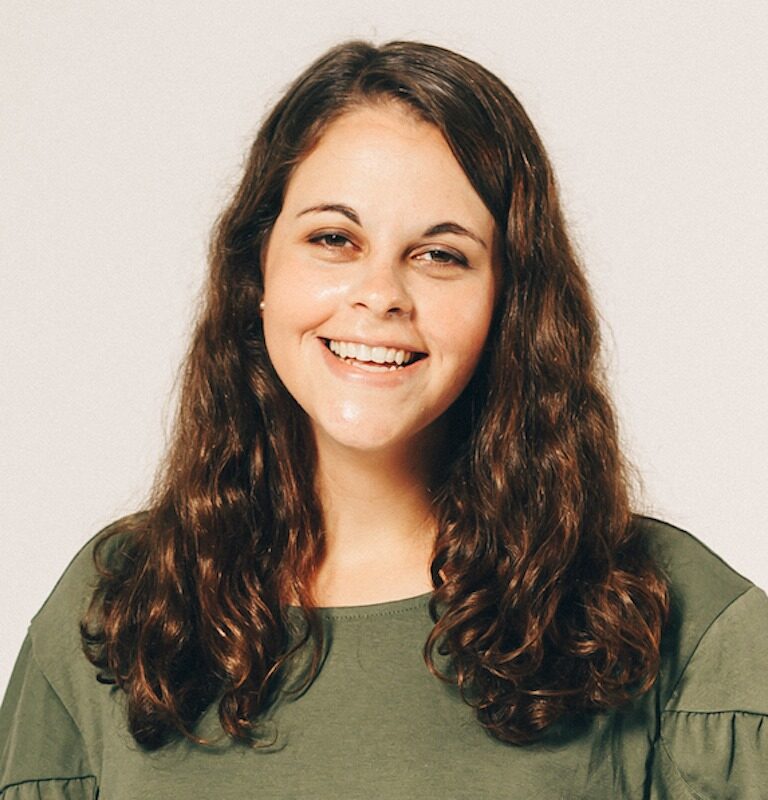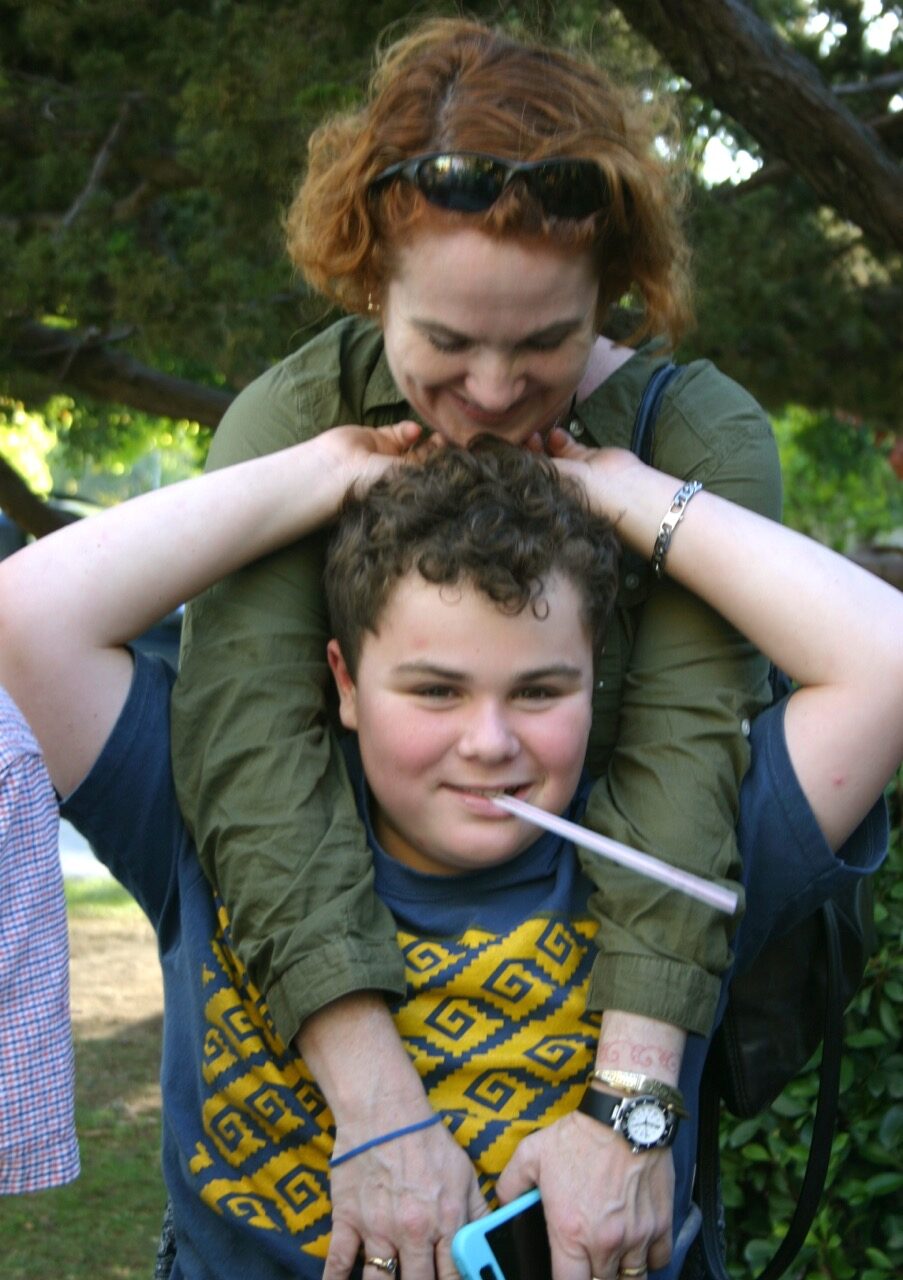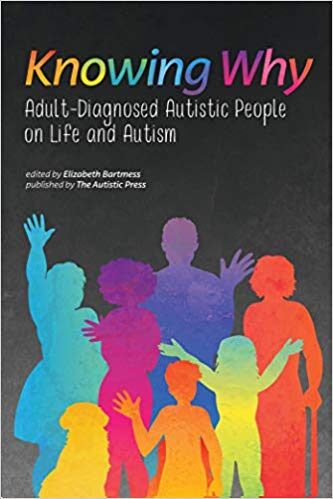The new 1 in 36 autism rate means the CDC is getting better at finding and diagnosing existing autistic children, not that there is actually a higher rate of autism.
Tag: Autistic Self Advocacy Network
Jordyn Zimmerman’s story, as told in the new documentary This Is Not About Me, is an example of how non-speaking autistic people can blossom when communication becomes possible.
[Image: The logo for PIXAR’s animated short film Loop. The word “loop” is written in rainbow-gradient lowercase script, on a white background.] Content note: Flashing graphic below Almost exactly one year ago, PIXAR released the short film Loop as part of its SPARKSHORTS program. In Loop, Renee and Marcus, “a non-verbal, autistic girl and a chatty boy are partnered on a canoeing trip. To complete their journey across an urban lake, they must both learn how the other experiences the world.” Marcus and Renee [Image: Still from PIXAR’s animated film Loop. A Black teen boy and girl are seated in a red canoe together. The boy is holding a paddle.] Renee is PIXAR’s first-ever autistic character, and is voiced by autistic actress Madison Bandy. Loop was also developed in close consultation with the Autistic Self Advocacy Network, which provided “feedback on what to them was feeling real, what felt funny and sad and…
Shannon Des Roches Rosa www.squidalicious.com Content note: This article discusses abuse and murder. Photo © Steve Silberman [image: a white woman, standing behind a white teen boy with brown curly short hair. He is looking at the camera. Her arms are over his shoulder, his arms are up and tickling under her chin.] When parents like me talk about our kids with disabilities and intense support needs, we have to be thoughtful. We need to make it quite clear that our kids are much-loved and very awesome human beings. We should never, ever state or imply that any challenges we face as a parent are our children’s fault. We need to handle their privacy with delicacy. And we shouldn’t accidentally enable disrespect towards children who are already too-frequent magnets for morbid fascination, and pity. But we do need to talk, because our parenting gig is not like other parenting gigs.…
What do autistic people need from autism research? What is current autism research doing right? How does research let autistic people and their families down, and why? And how can we convey these concerns to autism researchers? That is what #AutINSAR is all about: a conversation between autism researchers and autistic community members, both in person and on Twitter. We had fantastic conversations at IMFAR 2017 in San Francisco, and again at INSAR 2018 in Rotterdam, and are hoping for another fruitful discussion this year during INSAR 2019 in Montreal, Canada. AutINSAR will once again be a partnership between us and The Autistic Self Advocacy Network (ASAN), NOS Magazine, Autism Women and Nonbinary Network (AWN Network), AutChat, and We Are Like Your Child. We welcome new 2019 partners Flow Observatorium and Autistics 4 Autistics Ontario. #AutINSAR Partner Orgs: ASAN, AWN Network, NOS Magazine, TPGA, autchat, Flow Observatorium, and Autistic 4 Autistics…
Knowing Why is a valuable resource for anyone who has been through the process of being diagnosed or self-diagnosed as autistic in adulthood, anyone who wants to better understand us, and anyone who might be wondering if they might be autistic themselves.
Maxfield Sparrow unstrangemind.com Photo © Stephen Melkisethian | Flickr/Creative Commons [image: Black-and-white photo of disability rights protesters at the U.S. Capitol: some using wheelchairs, some not.] We educated our legislators. We wrote letters and made phone calls. We worked hard to get the message across, yet the House judiciary committee has chosen to take the next step to dismantle the Americans With Disabilities Act (ADA): H.R. 620 will go in front of the entire House of Representatives for a vote. We have no idea yet when that vote will be, so we need to renew our efforts to educate and persuade our lawmakers, so they will act to protect the ADA, and reject H.R. 620 and its agenda to confuse and limit the ADA. As I wrote back in May, “Unless we educate our legislators about the harm of notification bills like H.R. 620 and similar state-level legislation, the ADA Title…
Even though IMFAR is all about autism, researchers don’t always connect with #autistic concerns. Hence the #AutIMFAR Twitter Chat at IMFAR 2017, which was a conversation among autistic community members and autism research community members (with plenty of participants who were both). The onsite #AutIMFAR chat crew! Fab convo w/autistic and autism research folk. [image: hotel conference room gathering of autistic & non-autistic researchers and community members, of various genders & races, mostly white.] #AutIMFAR chat was a partnership with #autchat, The Autistic Self Advocacy Network, Autism Women’s Network, NOS Magazine, and Thinking Person’s Guide to Autism. We provided pre-chat guidelines and details. [image above: The Twitter logos for five organizations: autchat: a rainbow background with a black infinity symbol and black text reading: “#autchat“; The Autistic Self Advocacy Network: a spiraling rainbow heptagon on a white background; Autism Women’s Network: a pink lowercase “a” overlaid on a light-blue-and-brown illustrations of dragonflies and flowers, above…
A delighted announcement: TPGA is partnering with The Autistic Self Advocacy Network (ASAN), NOS Magazine, Autism Women’s Network (AWN), and autchat to host #AutIMFAR: a Twitter-based conversation between autism researchers and autistic community members. #AutIMFAR Partner Orgs: autchat, ASAN, AWN, NOS Magazine, and TPGA [image: The Twitter logos for five organizations: autchat: a rainbow background with a black infinity symbol and black text reading: “#autchat”; The Autistic Self Advocacy Network: a spiraling rainbow heptagon on a white background; Autism Women’s Network: a pink lowercase “a” overlaid on a light-blue-and-brown illustrations of dragonflies and flowers, above the lowercase black text “autism women’s network”; NOS Magazine: a black circle on a white background, with an illustration of an incandescent light bulb drawn in white and surround by a sunburst in dashed rainbow colors; and Thinking Person’s Guide to Autism: All-caps black text on a white background reading “Thinking Person’s Guide to Autism,” with “Person’s” in white text on a black arrow.]…
Housing for autistic adults is a fraught and confusing topic. We talked with Sam Crane, who explains why group homes can be bad for disabled residents, and why “intentional” housing often means just the opposite for the disabled people who actually live there.








